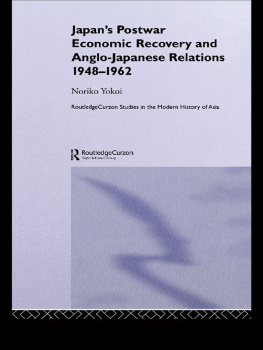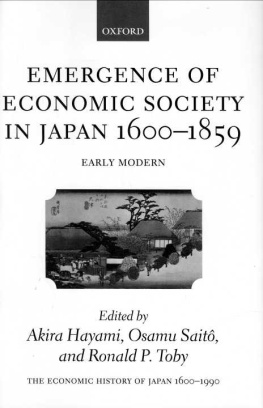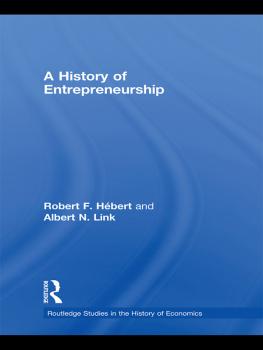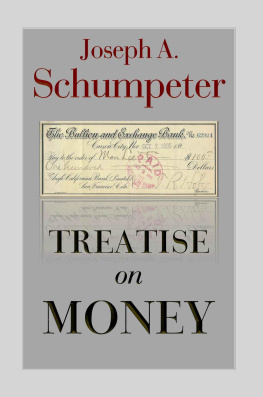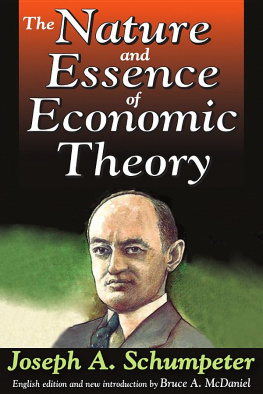CAPITAL AS
WILL AND
IMAGINATION
Schumpeters Guide to the
Postwar Japanese Miracle
Mark Metzler
CORNELL UNIVERSITY PRESS ITHACA AND LONDON
To Robert Eldredge Metzler, engineer and entrepreneur,
and to John Luke Metzler, again:
Der spiegelt ab das menschliche Bestreben;
Am farbigen Abglanz haben wir das Leben .
Contents
List of Tables
Acknowledgments
Abbreviations
Note on Terms and Conventions
Introduction: Inflation and Its Productions
The Revolution in Prices
1.1 Faustian Capital / 1.2 World War I and the Political
Economy of Twentieth-Century Inflation / 1.3 Postwar
Stabilization / 1.4 The Great Inflation of the 1940s /
1.5 Exporting Inflation / 1.6 The Inflation Comes Home
Dramatis Personae
2.1 The Schumpeter Vogue / 2.2 At the Monetary
Bonfire / 2.3 The Marxists / 2.4 The Capital Creator /
2.5 The Schumpeterians
What Is Capital?
3.1 When New Capital Comes onto the Stage /
3.2 The Distribution of Promises / 3.3 Credit Inflation
the Mechanism of Capitalist Development / 3.4 Capital
as Indication / 3.5 The Capitalist Process as an
IdealMaterial Circuit
Flows and Stores
4.1 Energy, Capital, and Debt / 4.2 Flows of Production /
4.3 Stores of Promises / 4.4 Saving Follows from
Investment / 4.5 Power and Planning
Japanese Capitalism under Occupation
5.1 Imagining Postwar Development / 5.2 First
Responses: Burning, Looting, and Printing / 5.3 The
Amplification of Monetary Flows / 5.4 The Constriction
of Material-Energetic Flows / 5.5 Liquidating
Japanese Capitalism
Inflation as Capital
6.1 The Ishibashi Line / 6.2 The ESB Line:
Modified Capitalism / 6.3 Inflation and Social Leveling /
6.4 Taxation as Monetary Regulation / 6.5 The Limits of
Modified Capitalism
Interlude (Deflation)
7.1 Joseph Dodge and the Theory of Capital Restriction /
7.2 The Sphere of International Capital / 7.3 Ministers of
Restriction / 7.4 The So-Called Stabilization Panic /
7.5 Inside Money and Outside Money / 7.6 The World
Economic Crisis
The State-Bank Complex
8.1 Banking as Economic Governance /
8.2 Superdirect Finance / 8.3 The Privatization of the
Positive Policy
The Turning Point
9.1 A Schumpeterian Turning Point / 9.2 Social Sources
of Keynesian Stabilization / 9.3 The Second Try at Global
Postwar Stabilization: Some Interim Conclusions /
9.4 Dollar Capital as Divine Providence / 9.5 Dangerous
Delusions
High-Speed Growth: The Schumpeterian Boom
10.1 The Restoration of the Business Cycle /
10.2 The Postwar Is Over: The Schumpeterian
Boom Begins / 10.3 Ishibashi and Ikeda: The Ascent
of the Positive Policy / 10.4 The International Circuit:
The External Capital Constraint
High-Speed Growth: Indication and Flow
11.1 The Domestic Circuit: Imagined Capital for Real
Growth / 11.2 Monetary Flows, Leakages, and
Absorption / 11.3 Credit Creation as Planning; Planning
as Credit Creation / 11.4 The Investment Doubling Plan
Conclusions: Credere and Debere
12.1 Norms and Exceptions / 12.2 Stocks of Debt and
Debt-Destruction Crises / 12.3 Autodeflation /
12.4 Mirrors and Miracles
Appendix
Notes
References
Acknowledgments
The collective enterprises of language and thought are life movements of which we all partake, and we perceive only glimmers of the sources of all we are given. Here I can acknowledge only the most visible help, starting with an appreciation of the field Ive been working in. Economic historians lament that economic history in the United States has fallen between the two stools of academic history and academic economics, two disciplines that seem to have turned their backs on the subject (a subject whose lessons may deflate some current conceits of both). I can begin by acknowledging that I dont encounter this problem when it comes to Japan. Economic history inside Japan sets a world standard in its detail, sophistication, and sheer volume, though only bits of this work find their way into English translation. Outside Japan, dozens of expert foreign historians of Japan incorporate economic subjects integrally into their work, and the combination of economic with social, political, cultural, and intellectual history flourishes with new insights and approaches. I have too much to draw on, and my citations acknowledge only a fraction of it. More directly, parts or all of this manuscript have benefited from the critical reading and comments of Andrew Barshay, David Bruce, Simon Bytheway, Katalin Ferber, W. Miles Fletcher, Dane Hampton, Thomas R. H. Havens, Laura Hein, Tony Hopkins, Temple Jorden, Robert Metzler, Scott North, Scott OBryan, Mario shima, Irwin Scheiner, Richard Smethurst, and Kohei Wakimura. A stimulus toward synthesis was provided by conversations with Katalin Ferber and Jean-Pascal Bassino. The series editors, Eric Helleiner and Jonathan Kirshner, and Roger Haydon at Cornell University Press, contributed greatly to its realization as a book. The work of writing it was done at the Departments of History and Asian Studies at the University of Texas at Austin, where special thanks are due to Alan Tully, and at the Institute for Research in Humanities at Kyoto University, where I finished the project thanks to the tremendous hospitality and encouragement of Naoto Kagotani. Earlier phases of research were done at the Faculty of Economics at Osaka City University, with the kind support of Mario shima, and at the University of Tokyos Institute of Social Science, where thanks are due to Nobuhiro Hiwatari. This project was assisted by research funding from the Japan Foundation, the University of Texas at Austin, the University of Texas Institute of Historical Research, the Institute for Research in Humanities at Kyoto University, the Northeast Asia Council of the Association for Asian Studies, and a Fulbright-Hays Faculty Research Abroad fellowship. Most important of all have been my family: my parents, Violet Metzler and Robert Metzler; my parents-in-law, Keiko Matsumoto and Shigeo Matsumoto; my spouse, Taeko, for her constant inspiration; and Miranda, Kairi, Tommy, Luke, and Elisey.
Abbreviations
For abbreviations used in the citations, please see the list at the beginning of the Notes.
| BoJ | Bank of Japan (Nihon Gink) |
| EPA | Economic Planning Agency (Keizai Kikakuch) |
| ESB | Economic Stabilization Board (Keizai Antei Honbu) |
| ESS | Economic and Scientific Section (of SCAP/GHQ) |
| IBJ | Industrial Bank of Japan (Nihon Kgy Gink) |
| MCI | Ministry of Commerce and Industry |
| MITI | Ministry of International Trade and Industry |
| MoF | Ministry of Finance (kurash) |
| RFB | Reconstruction Finance Bank |
SCAP, SCAP/GHQ,
or GHQ | Supreme Commander for the Allied Powers/General Headquarters; SCAP referred to General Douglas MacArthur but was applied by extension to the entire occupation administration. The two abbreviations, GHQ and SCAP, are used interchangeably. |
Note on Terms and Conventions
References to other parts of the book are by section number, in the format (see x.x).


